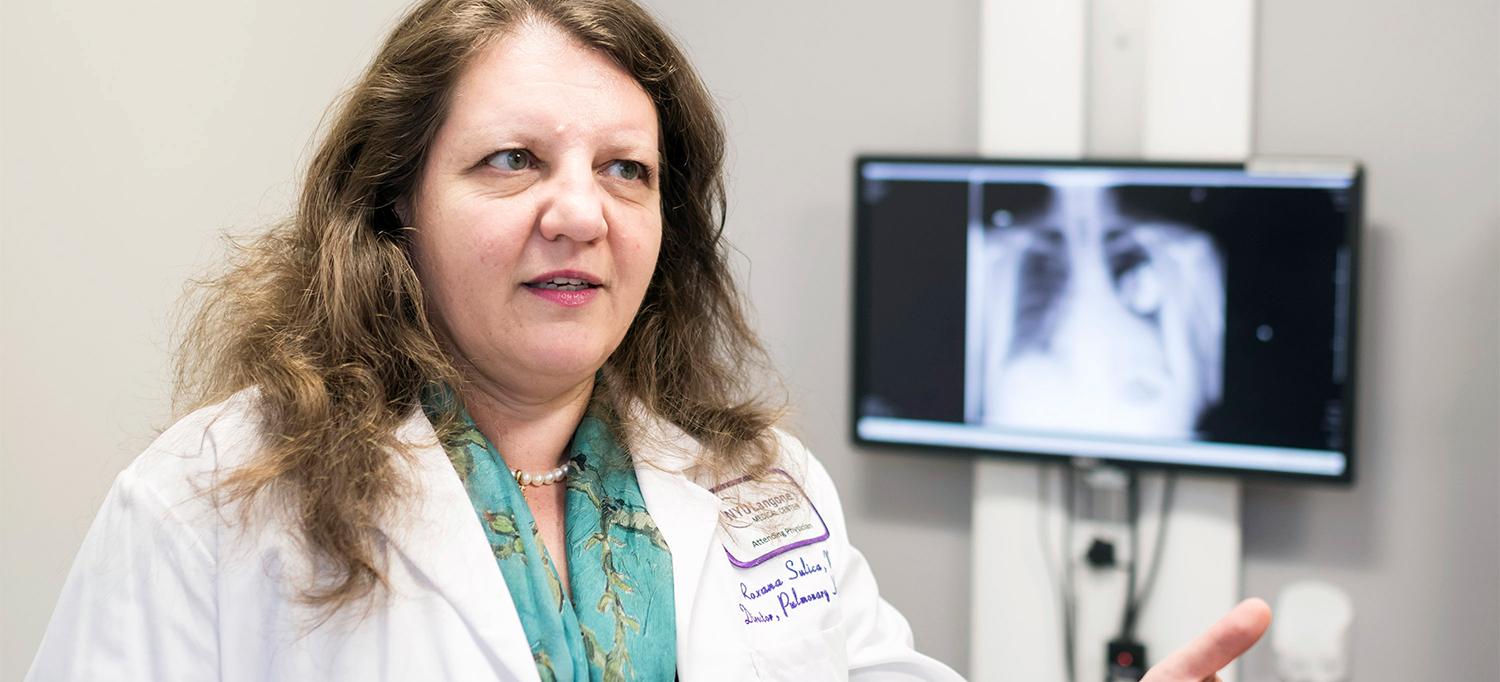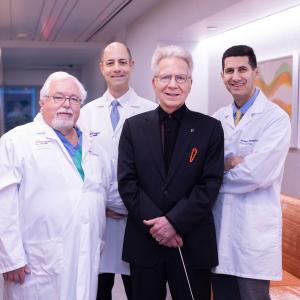
Dr. Roxana Sulica
Photo: Karsten Moran
NYU Langone’s Pulmonary Hypertension Program is one of the largest in the country to provide specialized treatment for this complex progressive disorder. Pulmonary hypertension (PH) is characterized by abnormally high blood pressure in the arteries that carry blood from the heart to the lungs.
“As a specialized center, we have the ability to provide all treatment options to our patients—options that are often lacking in the community. Here, we are using a vast array of inhaled and oral formulations, as well as intravenous therapy,” says Roxana Sulica, MD, associate professor in the Department of Medicine and the program’s director.
Within the year, NYU Langone will also utilize an implantable pump—newly approved by the U.S. Food and Drug Administration—for delivery of the blood-vessel widening agent treprostinil. This system eliminates the need for an external intravenous catheter and daily cassette replacements in patients with pulmonary arterial hypertension (PAH), a severe form of PH where the blood vessels in the lung thicken and narrow.
Expanding Pulmonary Hypertension Clinical Trials
In addition to currently available therapies, the Pulmonary Hypertension Program is working to vastly expand therapeutic options by providing patients with access to new classes of medications currently undergoing clinical trial. “We are participating in many multi-center treatment trials that investigate medications with varied mechanisms of action, new delivery systems for parenteral therapies, and treatment of various forms of pulmonary hypertension previously considered untreatable,” says Dr. Sulica.
The team is already recruiting PH patients for trials of orphan drug bardoxolone methyl, an oral once-daily antioxidant inflammation modulator, including a study focused specifically on the efficacy and safety of the drug in patients with connective tissue disease–associated pulmonary arterial hypertension.
In another ongoing multi-center trial, Dr. Sulica and fellow investigators are testing the use of pulsed inhaled nitric oxide in pulmonary hypertension patients with chronic obstructive pulmonary disease (PH-COPD), a form of the disease for which current treatments are ineffective. A molecule naturally produced in endothelial cells that promotes vasodilation, the nitric oxide in this system is delivered as a gas via a portable device that adjusts dosage in response to the patient’s breathing patterns. It has been shown in earlier studies to improve blood flow and increase patients’ exercise capacity—and has the potential to be the first drug approved for PH-COPD.
Less Invasive Approaches to Chronic Thromboembolic Pulmonary Hypertension Treatment
Zachary N. Kon, MD, surgical director of the lung transplantation program and assistant professor in the Department of Cardiothoracic Surgery, leads a program to treat chronic thromboembolic pulmonary hypertension (CTEPH). In 2017, NYU Langone joined the short list of select centers around the world to offer the technically challenging and potentially curative surgery, pulmonary thromboendarterectomy. Only an estimated 300 procedures are carried out nationwide each year. Dr. Kon is one of a small number of surgeons trained to perform this delicate surgery, which is the definitive treatment for CTEPH.
Typically, removing chronic blood clots and scar-like blockages that narrow the pulmonary arteries of CTEPH patients requires a complete dissection of the entire pulmonary vascular tree, with patients under hypothermic circulatory arrest. Dr. Kon has begun performing the procedure using a less invasive incision that avoids a full median sternotomy. “It translates into faster recovery time, less postoperative pain, and improved cosmetic results—without sacrificing outcome,” says Dr. Kon. “This is something our patients at NYU Langone really appreciate.”
Next, NYU Langone is gearing up to provide a new cutting-edge treatment option that could benefit additional CTEPH patients: balloon pulmonary angioplasty. “While pulmonary thromboendarterectomy is the gold standard of care, balloon pulmonary angioplasty holds a lot of promise,” says Akhilesh K. Sista, MD, associate professor of radiology and section chief of vascular interventional radiology. “Because it is much less invasive, it can potentially treat patients who are not candidates for surgery.”

